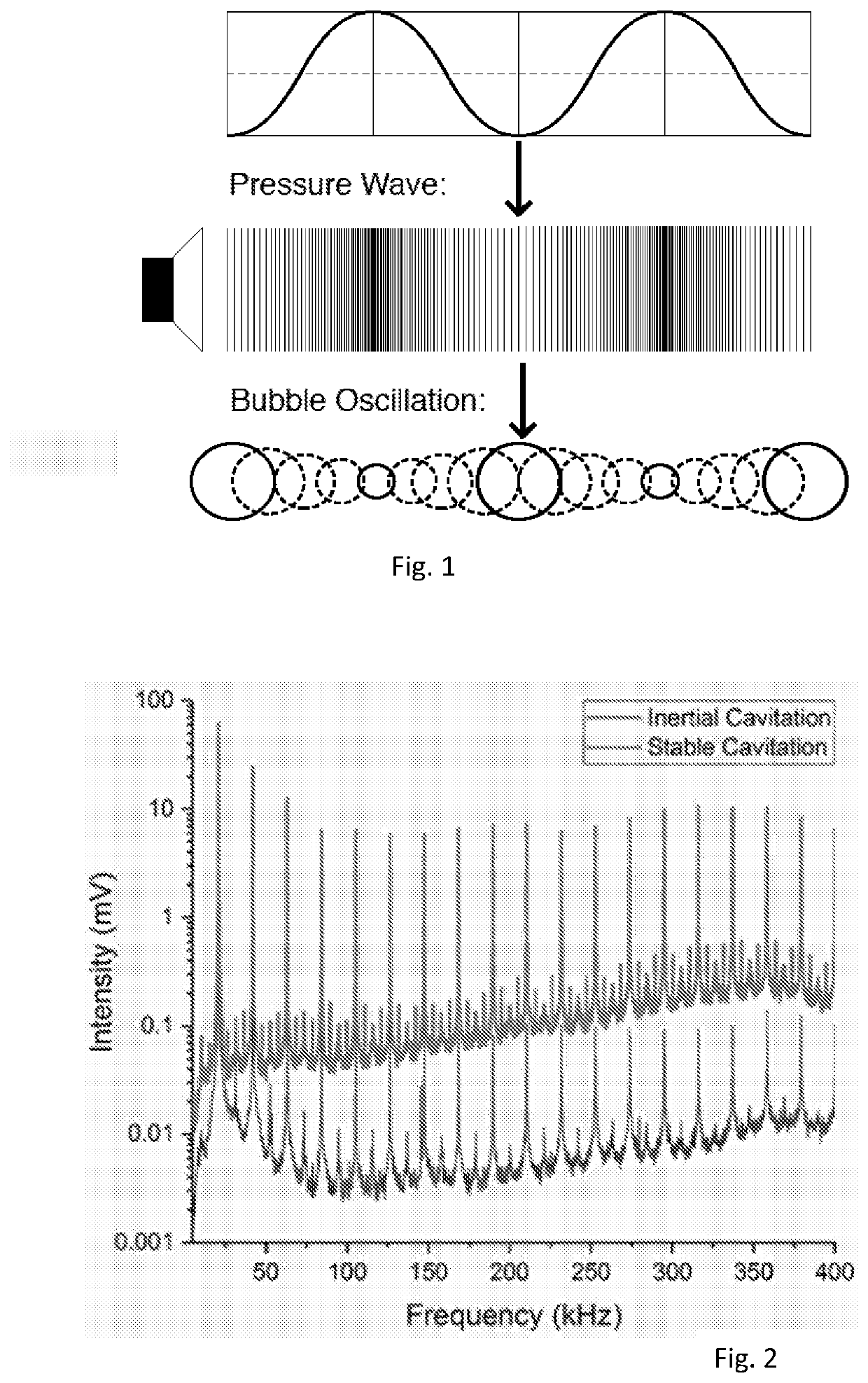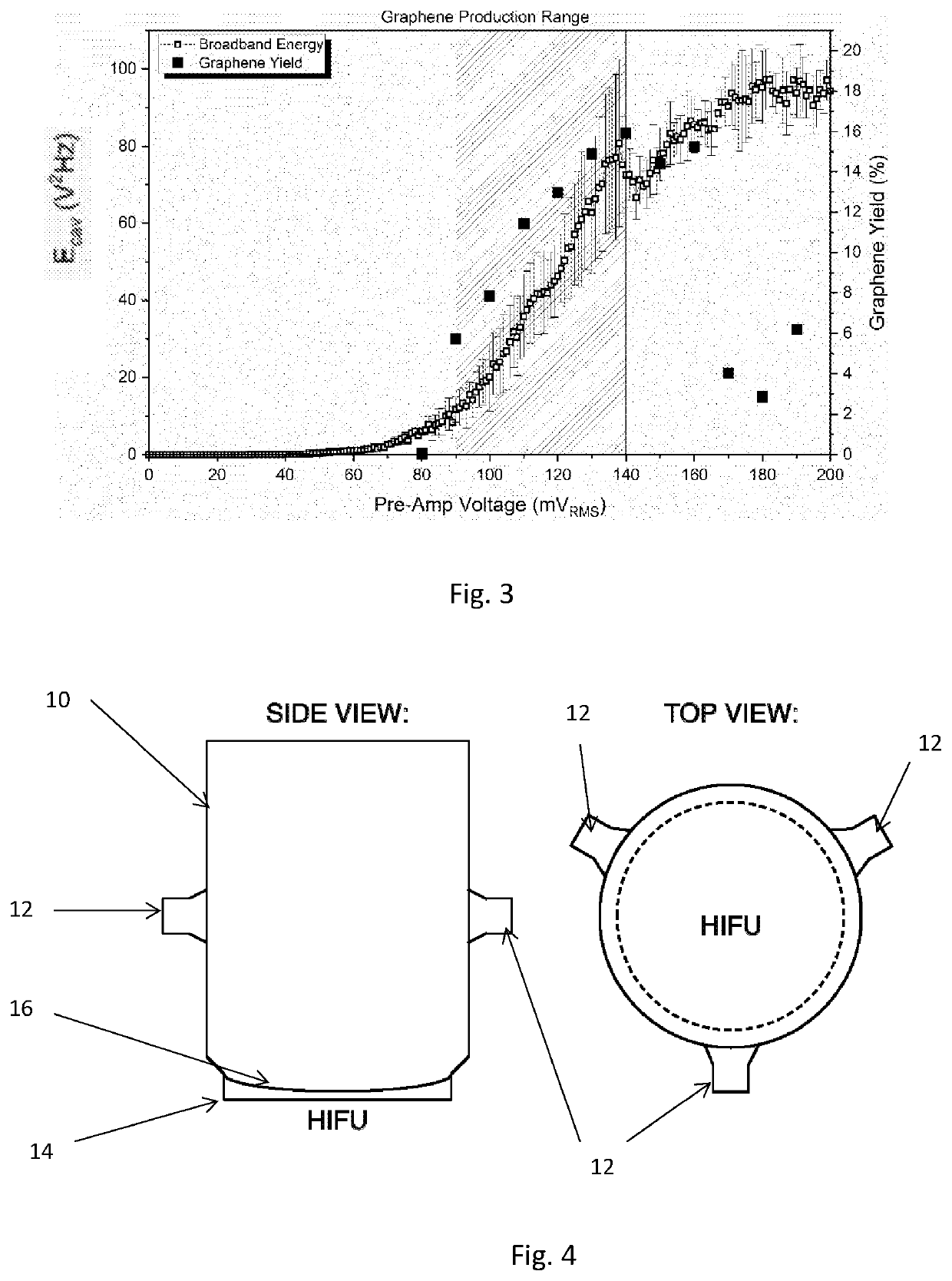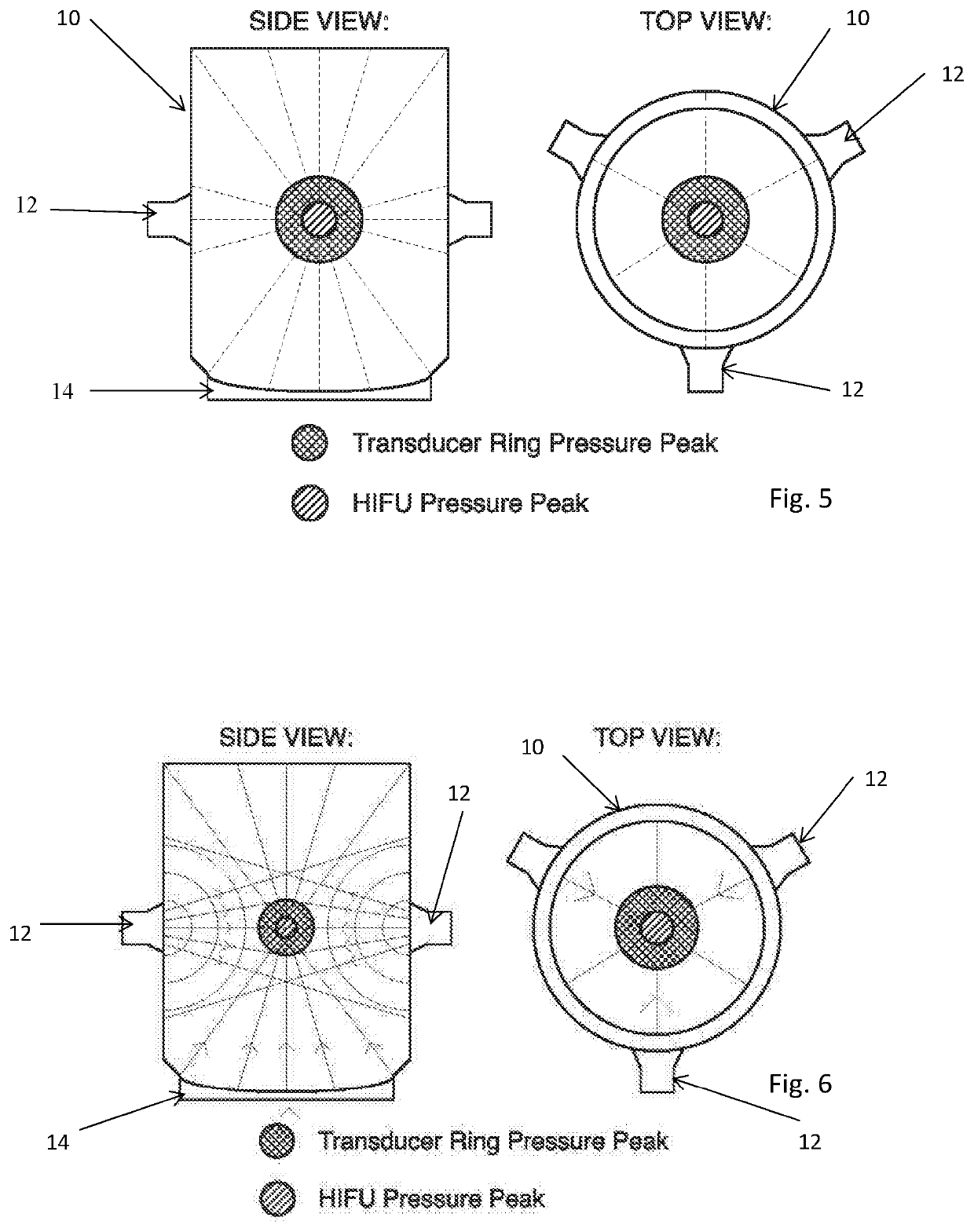Method of and apparatus for producing materials
- Summary
- Abstract
- Description
- Claims
- Application Information
AI Technical Summary
Benefits of technology
Problems solved by technology
Method used
Image
Examples
example
[0082]For the sake of completeness, there is described below a specific example of a method and apparatus embodying the teachings herein. The skilled person will appreciate from the teachings herein that this is just one of many ways of implementing the invention.
[0083]Fine Flake Graphite purchased from Asbury Carbons was pre-treated by sonicating in a 1 litre LDPE container for 30 minutes in an Ultrawave IND1750 sonic bath at a concentration of 10 mg / ml, with 1 litre of 15 MΩ de-ionised water and 1 mg / ml of sodium cholate surfactant (Sigma Aldrich). The graphite was then vacuum dried and sieved through a 75 μm test sieve to remove large flakes and then sieved using a 45 μm test sieve to remove small flakes, resulting in a size distribution of 45-75 μm. 0.2 mg / ml of pre-treated and sieved graphite was added to a 28 ml LDPE Nalgene vial (Fisher Scientific) along with a 25 ml magnetically stirred solution of de-ionised water with 3 mg / ml of sodium cholate surfactant (Sigma Aldrich). T...
PUM
 Login to View More
Login to View More Abstract
Description
Claims
Application Information
 Login to View More
Login to View More - R&D
- Intellectual Property
- Life Sciences
- Materials
- Tech Scout
- Unparalleled Data Quality
- Higher Quality Content
- 60% Fewer Hallucinations
Browse by: Latest US Patents, China's latest patents, Technical Efficacy Thesaurus, Application Domain, Technology Topic, Popular Technical Reports.
© 2025 PatSnap. All rights reserved.Legal|Privacy policy|Modern Slavery Act Transparency Statement|Sitemap|About US| Contact US: help@patsnap.com



